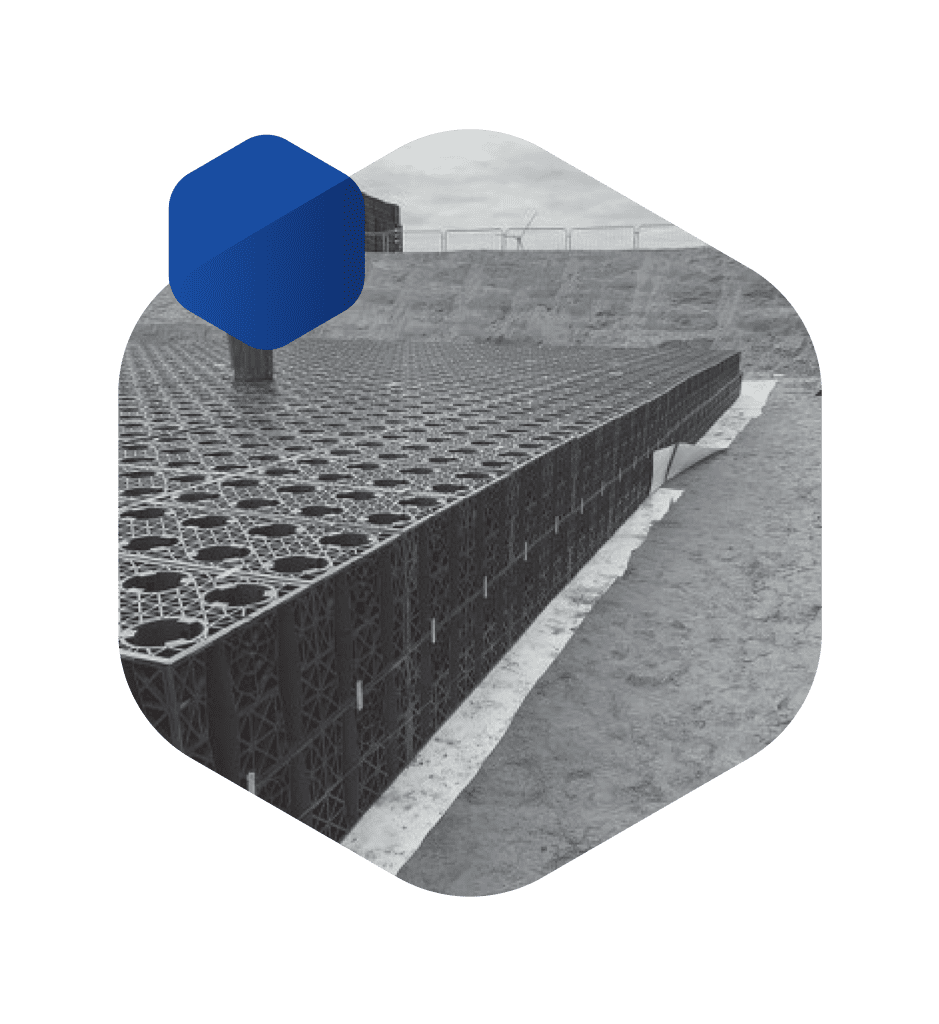The Principle of SUDS
SUDS or Sustainable Urban Drainage Systems are a sequence of water management practices and/or facilities designed to drain surface water in a manner that will duplicate the natural water cycle and can be physical structures built to receive surface water runoff. They are located as close as possible to where the rainwater falls and provide the options of infiltration and attenuation. Additionally, they treat surface water using the natural processes of sedimentation, filtration, absorption and biological degradation.
Recent research shows that typically up to 80% of sediment, 60% of phosphorous and 80% of nitrogen can be removed from stormwater through infiltration, together with substantial levels of heavy metals and hydrocarbons. This natural treatment provides the ideal opportunity for rainwater conservation and re-use (harvesting) for a variety of non-potable applications e.g. toilet/urinal flushing, irrigation, laundry, process water, vehicle washing, refrigeration, coolant use, etc. It also creates a cleaner output to the sewer or recharging of the groundwater where rainwater harvesting isn’t used.
Such source control principles and techniques, also called Best Management Practices (BMPs) are part of planning controls in most areas and are becoming increasingly incorporated within new development projects.
Current Guidance / Legislation on SUDs

Guidance
- Flood Risk Regulations – in connection with the European Floods Directive.
- Permitted Development Rights.
- Building Regulations (Part H) - Sustainable drainage is the preferred option for dealing with rainwater from a development.
- Surface Water Management Plan (SWMP) - Gives guidance to Local Authorities
- National Standards for Sustainable Drainage Systems - EA, LA’s & House Builders working together
- Guidance for Pollution Prevention (GPPs) – Replaces the old Pollution Prevention Guideline No.3 – Controlling pollution at its source
- Local Agenda 21 – furthering the Agenda 21 Process, agreed at the United Nations Conference on Environment and Development (the Rio Earth Summit) held in 1992.
Legislation
- Flood & Water Management Act – Received Royal assent in April 2010
- NPPF (National Planning Policy Framework) – Revised July 2021 (replaces various Planning Policy Statements such as PPS 25)
- CIRIA C753F – The SUDs Manual – Best Practice Guidance
- CIRIA C698 - Site handbook for the construction of SUDS
- Flood and Water Management Act – Management of flood risk by DEFRA
- Water Framework Directive – Required all signaturies to achieve “good status” for all rivers & waterways by 2027.
The four basic principles of SUDs
1.
Don’t hard pave surfaces unnecessarily – Porous Paving
2.
Soakaway where possible or attenuate if necessary – Stormwater Management
3.
Re- use if possible – Rainwater Harvesting
4.
Improve Water Quality


